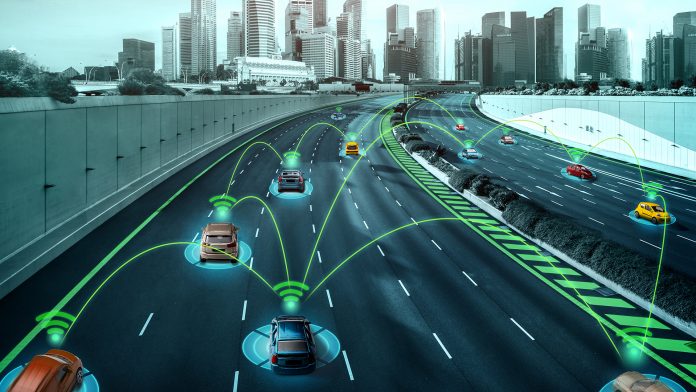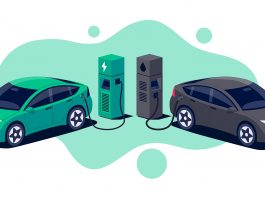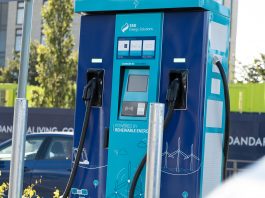The Horizon Europe-funded EV4EU project led by INESC ID, Portugal, is developing a bottom-up and user-centric Vehicle-to-Everything (V2X) management strategy to boost the use of electric vehicles (EVs) and aid more sustainable mobility.
Electric mobility plays a vital role in the transition towards a more sustainable society. Replacing fossil-fuel-powered vehicles with electric alternatives can reduce carbon dioxide emissions and other transport-related pollutants, improving air quality and reducing greenhouse gas (GHG) emissions.
In line with climate agreements and the Sustainable Development Goals, the European Commission plans to ban the sale of new petrol and diesel cars from 2035 to achieve net zero emissions by 2050. While policies may vary between countries, and exceptions are being considered for e-fuel vehicles as per the most recent events, the growing number of EV sales worldwide and the increasing pressure on car manufacturers to develop more efficient and environmentally-friendly vehicles are driving significant investment in EV technology.
EV adoption rates vary worldwide
Although EV adoption is increasing globally, their adoption rates vary across countries and continents, reflecting different needs regarding energy and power systems, charging infrastructure, Vehicle-to-Everything (V2X) management strategies, and regulatory framework. In the literature, we can find that in 2021, global EV sales reached 6.6 million units (8.6% of market share), with China and Europe leading the market. Several public reports show that Europe alone accounted for 2.29 million EVs sold (17% of market share), about 65,400 EVs sold in Denmark, 29,000 in Portugal, 10,000 in Slovenia and 7,000 in Greece – countries where the EV4EU project activities are taking place.
The increasing number of EVs leads to an increase in public charging points and, consequently, an increase in electric energy consumption. But how will the scenario look when no petrol and diesel cars are allowed?
Several e-mobility scenarios up to 2050 are publicly available. While varying their strategies, the most optimistic ones foresee over 1,800 million EVs worldwide (90% of the global fleet), 330 million in Europe, 3.2 million in Denmark, 6.3 million in Portugal, and 1.5 million in Slovenia. However, for Greece, they predict that EVs will constitute less than 50% of total vehicles by 2050.
Together, these previsions highlight the need for a corresponding expansion of the charging infrastructure and an overall increase in electricity demand, reflecting the needs of each country. The massification of EVs also poses other challenges that require urgent action, including user adoption, V2X development, and battery technology.
What is EV4EU?
The Horizon-Europe-funded EV4EU project, led by INESC ID, comprises a consortium of 16 participant partners from four countries and has a duration of 42 months. The project aims to develop and implement bottom-up and user-centric V2X management strategies, taking into consideration user needs, power systems, battery impact, energy markets integration, and city transformation. The proposed V2X management strategies will evaluate the advanced control methodologies and tools, implementation conditions, consolidation of solutions and potential business models.
The V2X solutions to be developed in the project will be tested in four different environments: houses, buildings, car parks, and energy communities, across four demonstration sites. In the Azores, Portugal, the V2X strategies to be tested will facilitate electric vehicle charging in homes, buildings, and companies. Denmark will test different energy management methods integrating renewable energy production in buildings and car parks. Slovenia will test the impact of V2X on the electricity network, energy markets, and ancillary services. Greece will test a more user-friendly platform for managing charging stations and investigate the impact of EVs on the grid. The EV4EU solutions can generate added value for all parties involved and create new business opportunities. According to the use cases that will be tested in the different demonstration sites, 12 EV4EU business models have already been identified and developed.
The emergence of V2X technology introduces new complexities in EV management
The EV4EU project has already proposed several EV management strategies considering V2X and analysed their impact on EV adoption by 2050.Of those, price-based strategies are effective if reasonable prices can avoid new peaks caused by periods of concentrated charging – when consumption is generally low. Peak-shaving strategies can mitigate the impact of EVs in peak periods but may not consider renewable energies (RES). The co-ordination between RES and EVs seems to be the most effective strategy, especially in countries with high penetration of RES (e.g., Portugal and Denmark, of the four countries studied). However, continuous control of the EVs is required to follow generation profiles. Thus, V2X can increase the power demand volatility, when price-based strategies are considered, but presents clear advantages on peak shaving and co-ordination with RES, reducing peaks or avoiding renewable generation curtailment.
Important for the energy transition, the strategies that co-ordinate RES and EVs can increase the use of renewable energy and support the energy grid in periods where RES production is low. Of the countries studied, this applies mainly to Portugal and Greece – the countries with high integration of photovoltaic technology.
Concerns of EV users must be prioritised for the rollout of V2X management strategies
Large-scale EV adoption and mass deployment of V2X strategies can only happen if the needs and concerns of EV users are prioritised. Different factors can influence their demands and satisfaction levels, and those can vary greatly from country to country. Even within a specific country, different user needs and concerns lead to different user types, each with unique demands to be addressed.
Through research, interviews and quantitative surveys of EV users and experts, EV4EU has gathered knowledge on EV user behaviours and motivations across the four countries studied. Briefly, economic and ecological motivations are the main factors leading a user to opt for an EV – a finding shared among users of all four countries.
Other factors, such as government incentives and charging issues, have different impacts on e-mobility across countries. However, participants from all countries reported that the public charging infrastructure is insufficient, and users tend to prefer charging at home. Energy literacy has been seen as a factor favouring EV and V2X acceptance, with Denmark presenting a higher energy literacy combined with higher EV adoption. Overall, the users interviewed across the four countries were little or unfamiliarised with V2X technologies, presenting several concerns about how V2X works. These findings indicate a need for more educational initiatives, governmental actions and charging infrastructure development to encourage EV uptake and acceptance of V2X solutions.
Several relevant EV and V2X legislative efforts are currently being pursued in Denmark, Greece, Slovenia, and Portugal, but even so, their EV penetration levels are not equal. Several barriers and gaps for V2X integration have already been identified. For instance, Greece needs to extend demand flexibility-related legislation to local markets, providing the system operator with more tools to manage network conditions, with EVs and V2G being the most crucial tools. Portugal needs to implement legislative coverage for V2G. Slovenia needs more support to install chargers in multi-apartment buildings. Lastly, Denmark, presents a fragmented public charging network. Understanding all the EV and V2X policies and legal mechanisms of each country is key to developing and implementing better V2X strategies.
In summary, the EV4EU project intends to develop tools, technologies, business models and strategies to facilitate the co-ordination between electric vehicles and renewable energy sources. This approach will promote massive growth of EVs, leading to a reduction in GHG emissions and supporting the decarbonisation of road transport.
This work is supported by national funds through FCT, Fundação para a Ciência e Tecnologia, under the project UIDB/50021/2020 and by the project EV4EU funded by the European Union under grant agreement no.101056765. Views and opinions expressed are, however, those of the authors only and do not necessarily reflect those of the European Union or CINEA. Neither the European Union nor the granting authority can be held responsible for them.
Please note, this article will also appear in the fourteenth edition of our quarterly publication.









